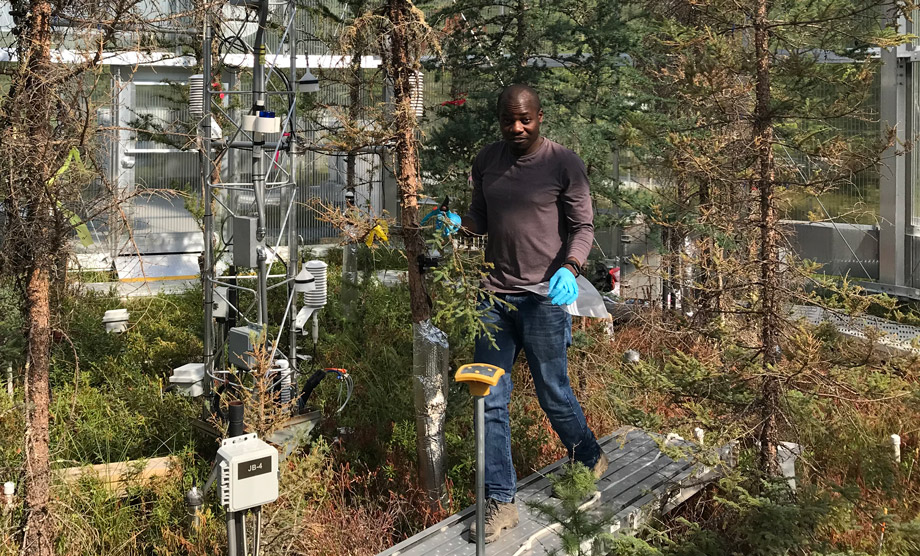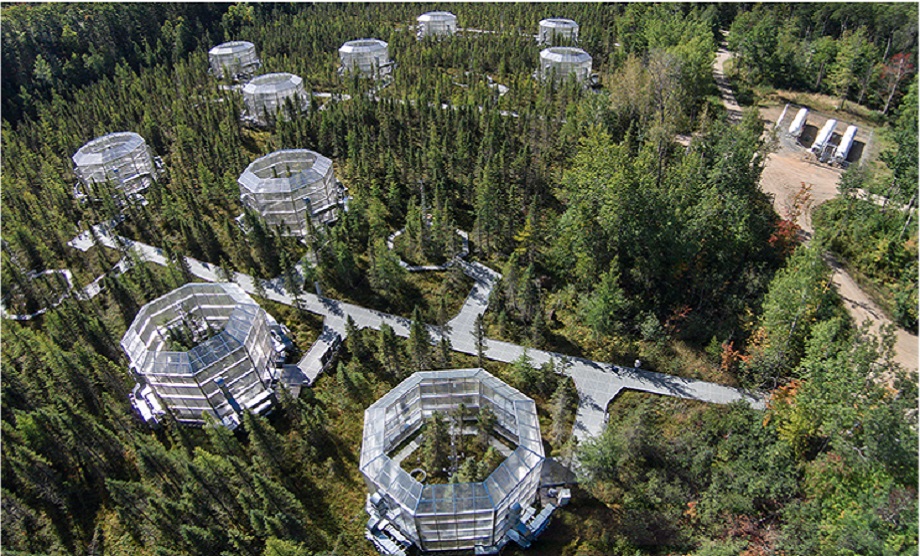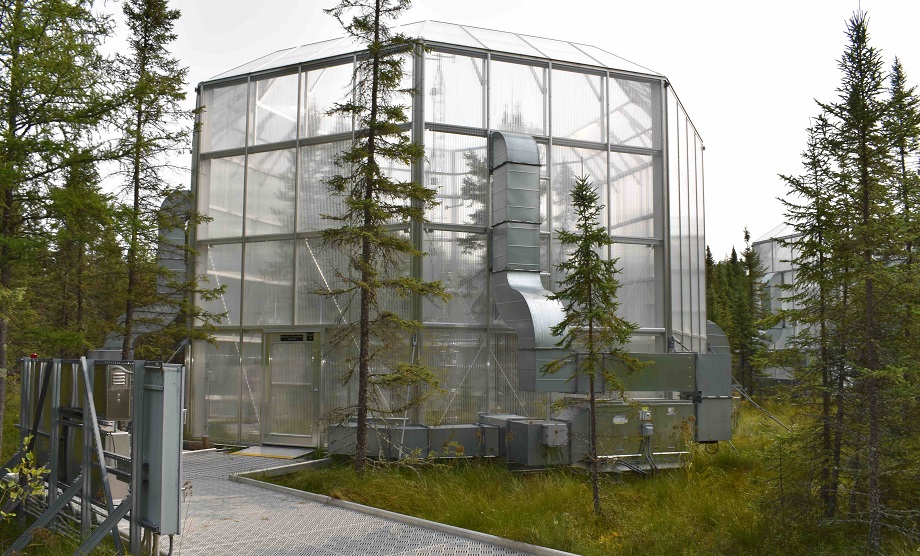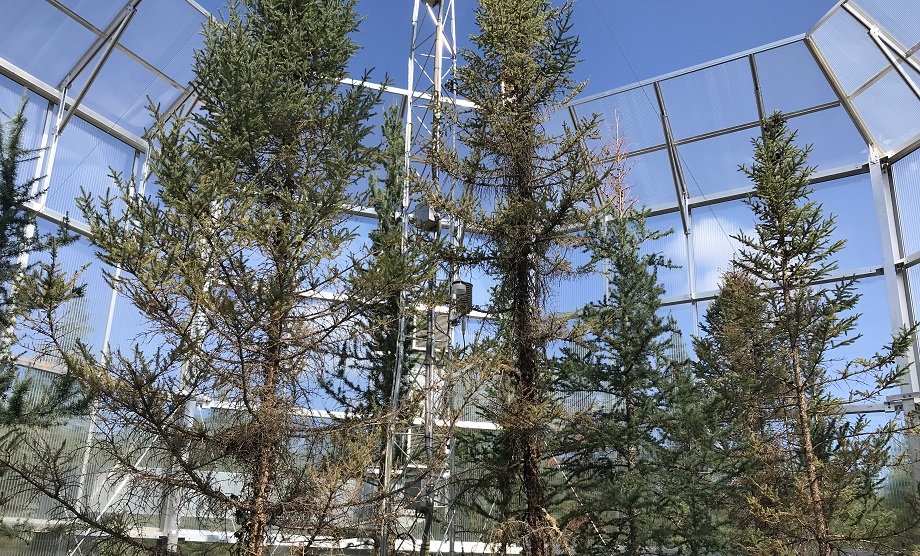Encapsulating the ecosystem for soil research
Soil is one of the largest carbon storages on earth - but can be a massive producer of greenhouse gases. Nicholas Ofiti examines this precarious balance in the face of climate change in his PhD thesis.

Nicholas, you investigate what is happening in the soil beneath us. Has this always been your dream?
No, actually I wanted to become a veterinarian. I grew up in a village close to Lake Victoria in Kenya. Agriculture and animal husbandry are the livelihoods of many people there. Thus, the knowledge and skills of a veterinarian are very useful and appreciated. For my Bachelor, I applied for a government scholarship to study veterinary medicine and was very lucky to get it. After a week of studying veterinary medicine, I met a brother of my high school friend who was doing his PhD in soil science in the U.S. and he tried persistently to convince me that soil science was very important in the face of climate change and that I would be making a mistake if I studied veterinary medicine. This made me change my mind, I dropped veterinary medicine and took up soil science. Luckily, I was able to keep my scholarship to study my Bachelor in soil science. My family was not intrigued and the people in my village could not understand what there was to study about this matter of soil. But I really liked the interdisciplinary approach of the curriculum including also hydrology, agriculture, and the effects of climate change.
How did you come to be a PhD candidate at GIUZ now?
At an African convention of soil scientists in Nairobi I presented the work I was doing at the National Agricultural Research Institute of Kenya and also my bachelor thesis. One of the few European scientists attending was a Belgian researcher who engaged me in an exciting discussion. Finally, he invited me to apply for a scholarship to do a Master’s at Ghent University in Belgium. I was lucky to get this scholarship and did my Master’s there. The research group collaborates with the Soil Science and Biogeochemistry unit (2B) at GIUZ who was searching for a PhD candidate familiar with the methods I already used in my Master’s. That is how I got here.
What is your PhD thesis about?
It is about the role of soils in the face of climate change. Soil is the largest carbon storage on earth after the oceans. Hence, it is crucial to understand how changing climatic conditions affect the soil's capacity to store carbon. We simulate the expected temperature conditions in the year 2100 in specially built greenhouses at two research sites in the U.S. These experiments are unique so far.
Tell me more about how you do it.
We artificially warm vegetation and soil down to a depth of three meters. This is done in transparent enclosures of twelve meters diameter and a height of seven meters and at different temperatures. And we add CO2 to the atmosphere corresponding to the expected CO2 content in 2100. So, we encapsulated the whole ecosystem in the respective area of the experiment i.e., a temperate forest and a boreal forest peat. Thus, the vegetation above ground is closed in a circular greenhouse on top of the warmed soil circle.
As you know, plants are the main source for carbon input in soil. Plants take the carbon from CO2 in the air through photosynthesis, then store part of it in their cells, and transfer the rest to soil through their roots. When plants die or shed their leaves, carbon from plant material gets transformed by micro-organisms and is stored in the soil. Now we are asking whether there could be a balance between carbon taken up and assimilated within plants and carbon translocated into the soil. Investigating this in the encapsulated ecosystem while changing parameters according to future climate change is our novel and unique research approach.
What do your results show so far?
With artificially increased temperature soil lost a third more carbon compared to ambient temperature within 5 years. This is due to more decomposition and soil respiration by microorganisms. This is what one of our experiments showed. Also, warming causes massive stress for the plants. Most of them cannot adapt to the changing conditions and die.
It particularly affects the mosses which are the main contributors to the peat formation and carbon accumulation. Therefore, they are called the "engineers of the peat land”. With this massive warming they are replaced by other plant species, for example shrubs. These are decaying very quickly. Consequently, carbon escapes to the atmosphere and is not stored in the soil. More carbon in the atmosphere leads to increased global warming, a so-called positive feedback effect.
What will be your next steps?
I would love to continue my research as a post-doc. I also want to get the public to understand what our results shows and what it means for our future on planet Earth. We as scientists need to invest into an open and understandable communication with the general public. It is our responsibility to help ensure that policies are put in place to slow down climate change.
Featured Paper: Deep forest soils produce greenhouse gases as temperatures climb
Soil Science and Biogeochemistry, Department of Geography, UZH
Franziska Schmid


